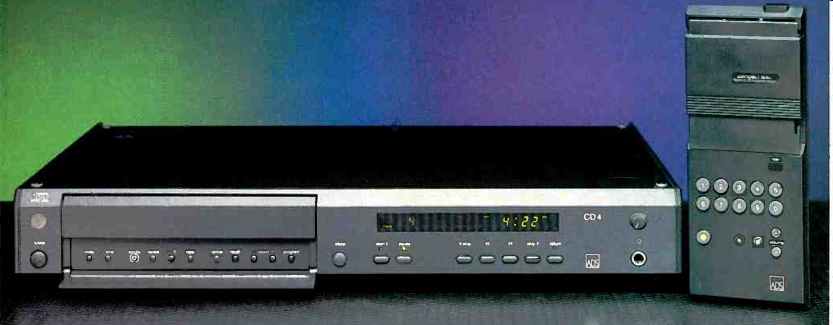
Manufacturer's Specifications:
Frequency Response: 20 Hz to 20 kHz, ± 0.25 dB.
S/N: 102 dB, A-weighted, re: 1 kHz, 0 dB.
THD: Less than 0.01%, 20 Hz to 20 kHz, at 0 dB; less than 0.1%, 20 Hz to 20 kHz, at -30 dB.
Channel Separation: Greater than 86 dB, 20 Hz to 20 kHz.
Channel Balance: Within 0.5 dB at 1 kHz, 0 dB.
Disc Fault Correction: More than 900 microns for faults in data layer; more than 800 microns for black surface spots.
Low-Pass Filter: Digital plus multi-pole analog.
Phase Shift: Less than 5°, 20 Hz to 20 kHz, between or within channels.
Output Level: Main, 2.0 V rms at 1 kHz, 0 dB; headphone, 0 to 2.0 V rms into 30 ohms.
Dimensions: 17 1/2 in. W x 2 3/4 in. H x 14 13/16 in. D (44.5 cm x 7.0 cm x 37.6 cm).
Weight: 20 lbs. (9 kg).
Price: $900; RC1 remote control, $100.
Company Address: One Progress Way, Wilmington, Mass. 01887, USA.
Like the earlier CD3 (see Audio, June 1985), ADS's CD4 Compact Disc player is part of that company's Atelier series. It is categorized by ADS as a "reference" component, and its ergonomics and performance, like those of the CD3, deserve that classification.
The CD4's most often-used controls are grouped in full view on the front panel. Controls used less often are behind a covered panel below the disc drawer. These controls permit toggling between display modes (elapsed or remaining time, and track or index number), programming up to 16 selections, tagging any passage on the disc for A-B repeat, setting whole-disc repeat, or playing a stored program.
The CD4 is extremely rugged, both internally and externally. Its strong steel side rails easily support the weight of stacked equipment. Like other ADS Atelier components, the CD4 uses steel top and bottom covers for mechanical strength as well as for electrical shielding. The die-cast transport mechanism is internally shock-mounted on four tuned rubber-and-spring mounts. A linear-motion laser pick up housing rides on precision guides and is driven by a high-speed gear motor. The disc spindle is driven by a heavy-duty brush-type d.c. motor that offers high torque. In typical fashion, ADS has paid attention to small details that make for product elegance. For example, a push-to-access, push-to-recess headphone level control knob keeps the front panel looking smooth and flush when the knob is not being used.
As for the electronic innovations in the CD4, perhaps the most important of these is what ADS calls their "Variable Window" error-correction system. This system dynamically controls the size of the data block used when separating clock (timing), subcode, and audio data. When refractive errors (or other problems) in a disc cause clock and audio data to be confused for one another, the data window widens. The widened window can then take in adjacent clock signals, so that the system can tell where the confused clock signal should be. As the errors diminish, the window is narrowed again, to reduce time jitter and to give the system more time to do its computations. According to ADS, this process results in fewer errors caused by the contamination of audio data by other data types.
For uncorrectable errors, the CD4 does not repeat the last properly read data sample or mute the audio output, as some players do. Instead it uses linear interpolation, computing the approximate value of each missing data sample from the values of the data on either side of it.
The CD4 has three separate power supplies, one each for the digital, analog, and control circuits, so these circuits will not introduce noise into each other. There is also a noise filter on the incoming a.c. line, to block interference from or to other equipment.
Separate D/A converters are used for each channel, with full 16-bit linear conversion. The converters run at a 67-MHz clock rate. Two-times oversampling with steep digital filtering is employed, along with hypersonic multiple-pole analog filters that have steep cutoff characteristics above 35 kHz.
As I discovered during my bench tests of the CD4, this combination of analog and digital filtering provides extremely good spurious--response rejection, both inside and out side the audio pass band.

Fig. 1-Frequency response, left (top) and right channels.

Fig. 2-THD vs. frequency at maximum (0-dB) recorded level.

Fig. 3--Spectrum analysis of reproduced 20-kHz test signal; note absence of
any of the usual "beat" tones.
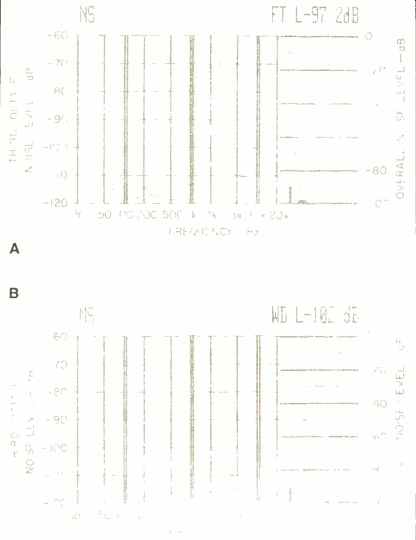
Fig. 4--S N analysis, both unweighted (A) and A-weighted (B).
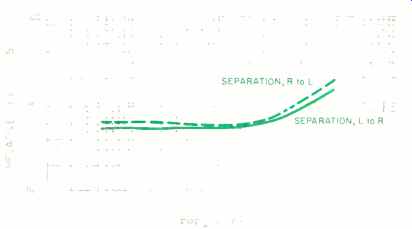
Fig.
5--Separation vs. frequency.
Control Layout
Seven basic control buttons are positioned beneath the display on the lower right side of the front panel. These include: "Start" (play), forward and reverse "Skip" for jumping from track to track, forward and reverse scan (placed between the two "Skip" buttons and marked with directional arrows), and "Return," which stops play and sends the laser back to its rest position. Holding either scan button down for more than 5S increases the scanning speed. A headphone jack and headphone level control are located at the right end of the panel. The "Slider" button, which opens and closes the disc tray, is just to the right of that tray, while the "Power" switch and pilot light can be found at the panel's extreme left.
The display window above the major controls shows track or index numbers up to 99, and either time elapsed within the track or time remaining on the disc. It also indicates which display, program, and repeat modes are in use, and whether there is a disc in the drawer.
A gentle push on the panel beneath the disc drawer opens a swing-down section to reveal 11 less often-used controls. The first two toggle the track/index and time display modes. The next four control the repeat modes: "Single" repeats the current track over and over, "Repeat" plays the entire disc repeatedly, "A-B" marks the beginning and end of a user-selected passage to be repeated, and "Clear" returns the player to normal mode. The last four buttons are for programming. Up to 16 selections can be programmed, in any order; this requires stepping back and forth through the disc's tracks. To program track 7 followed by track 3, for instance, you would first press the "+" button six times, then press the "-" button four times.
The rear panel of the CD4 has the usual main output jacks as well as a "Digital Out" connector. The latter should more properly be called a "digital interface," for it not only delivers audio and non-audio data for use with future equipment, but also accepts digital control signals from an integrated, multi-room remote control system that ADS plans for the near future. A rear-panel cover cleverly conceals all input and output cables as well as the power cord, to give a clean, uncluttered look to the unit even when viewed from the back. Special slots permit easy mounting and removal of this cover, but it can also be swung out of the way, once it's installed, for easy cable access. Indentations on the top cover line up with the feet of other ADS Atelier components for safe and stable stacking.
In addition to the CD4, ADS supplied me with their option al RC1 master remote control, which operates all current (and some future) Atelier components. When you move a slider to the name of the component you want to control and press the "Open" button, the remote unit opens like a desk top telephone directory, to show the buttons controlling that particular component and the appropriate legends. The RC1 controls only the seven major control functions of the CD4. You can't program the player from the remote, nor can you access a given track directly (instead of skipping through intervening tracks). The numeric keypad on the RC1 can be used for track selection and programming with the CD3 (which now carries a suggested price of $1,250), but those features were left off the lower priced CD4.
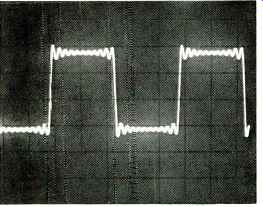
Fig. 6-Square-wa're reproduction. 1 kHz.
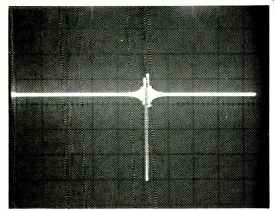
Fig. 7-Single-pulse test.

A swing-down panel conceals the programming, display-mode, and
repeat controls until they're needed.
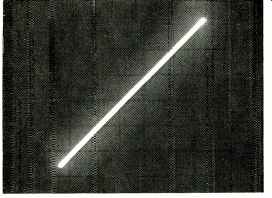
Fig. 8-Lissajous pattern shows absence of phase error between left and right
channels when reproducing a 20-kHz tone.
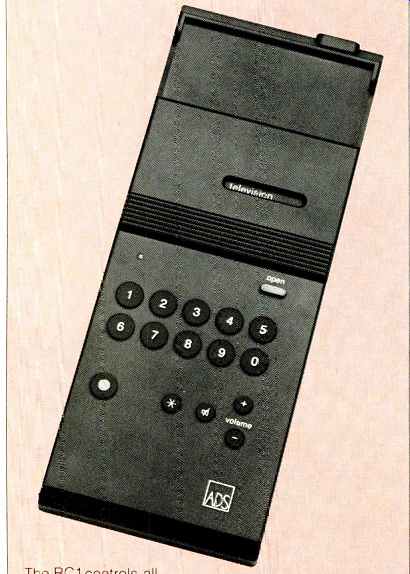
above: The RC1 controls all present and future Atelier components.
Measurements
Figure 1 shows the frequency response obtained at the output of each channel when playing a swept-frequency test signal from below 20 Hz to above 20 kHz. At 20 kHz, I measured an attenuation from reference level of only 0.5 dB on one channel and 0.6 dB .on the other. Perhaps more important, there was no evidence of any "peaking" or "wobbling" of the response at the high end, indicating a near-perfect post-D/A analog filter design. Harmonic distortion at 0-dB (maximum) recorded level was far lower than ADS's conservative spec. At 1 kHz it measured only 0.0035%; more important, even without interposing a low-pass filter, the distortion measurement rose no higher than 0.009% when high-frequency THD was measured (Fig. 2). In other words, the usual "beats" outside the audio band simply weren't there. This is only the fourth or fifth CD player that I have ever measured which did not exhibit such out-of-band beats or spurious responses. Confirmation of this result was obtained when I played a 20-kHz test tone and ran the output of the CD player into my spectrum analyzer, sweeping the analyzer from 0 to 50 kHz. All that is visible in the 'scope photo of Fig. 3 is the 20-kHz signal itself, represented by the single tall spike. Compare this with the corresponding photo for almost any of the units I've tested over the last couple of years and you'll see why I was impressed.
Unweighted signal-to-noise ratio measured 97.2 dB (Fig. 4A). When an A-weighting network was added in the measurement path, S/N increased to 102 dB (Fig. 4B), exactly the number claimed by ADS. Dynamic range, not specified by the manufacturer, measured a very high 111.5 dB. This figure is obtained by measuring the difference between maximum (0-dB) recorded level and the THD amplitude (in dB) generated by a 1-kHz tone at-60 dB. In the case of the CD4, THD for a 1-kHz signal at-60 dB measured 0.266% or 51.5 dB below the test-signal level; adding 60 dB to this figure yields 111.5 dB.
Linearity of the CD4 was accurate to within 0.1 dB all the way from maximum recorded level to -80 dB recorded level. Below that point, my test instruments begin to intro duce measuring errors. Wow and flutter was too low to be measured, and the level difference between channels was 0.01 V for a nominal output of 2.05 V rms at maximum recorded level. SMPTE IM measured 0.007% at maximum recorded level, while twin-tone CCIF-IM distortion was only 0.002% at both maximum recorded level and at -10 dB.
Stereo separation, including the effects of my connecting cables and measurement instruments. is plotted in Fig. 5. At mid-frequencies, I measured channel separation of approximately 85 dB from left to right and from right to left. The symmetry of the 1-kHz square wave shown in Fig. 6 and of the unit pulse in Fig. 7 provides ample proof of ADS's use of digital filtering and oversampling. The absence of any phase error or time delay between left- and right-channel outputs when reproducing a 20-kHz test signal. as evidenced by the straight-line Lissajous pattern shown in Fig. 8. indicates the use of separate D/A converters for each channel of the CD4.
Use and Listening Tests
It is difficult to justify a $900 price tag for a CD player until you start using a player like the ADS CD4. Its slim and graceful appearance is somewhat deceptive. This player is so ruggedly built and its mechanism is so well shock-mounted and isolated from external vibration that I literally had to pound its surface to make it mis-track. As for tracking through scratched discs and opaque surface dirt, it goes without saying that this player had no trouble traversing my simulated-defects test disc. I've also created (largely by accident) a few actual defects discs of my own, and it was interesting to see that the CD4 played through two of the most severely damaged of these. Nearly all the other CD players that I've tested since these discs were inadvertently created were unable to play them through without muting or skipping.
As for sound quality. it is every bit as good as the sound I remember hearing and noting when I tested the more expensive CD3. That's not really very surprising, since much of the circuitry is the same. According to ADS, the economies that were made resulted primarily from simplification of mechanical details. The LED displays found on the front of the CD3's disc drawer have been moved to the front panel of the CD4, directly above the three control buttons that they designate ("Start," "Pause," and "Return"). The triangular, tilt-out panel of the CD3 has been replaced by a simpler panel for the CD4's secondary controls. These changes, along with some simplification of the p.c. board layout, account for much of the price difference between the two units.
From my point of view, the chief reason for selecting the more expensive CD3 might be a desire for its more elaborate remote-control capabilities. I must admit, too, that I sort of wished ADS had thought of choosing a different model number for this new player. Those of us who have been in the audio business for more than a decade associate the name CD4 with a quadraphonic system that was not exactly a big winner. I hope that ADS's CD4 will enjoy infinitely greater success in the marketplace; it certainly deserves to.
Finally, regardless of whether you choose the CD3 or the CD4, you'll still have to pay extra for remote control. I resented that a bit when I tested the CD3 and I must confess that I still think ADS ought to have included the remote at no extra cost-if not the all-embracing RC1, then a simpler, dedicated remote for the player alone. The omission is a minor point, though, compared with the overall user benefits and performance level of this superbly designed and executed CD player.
-Leonard Feldman
[AUDIO magazine/June 1987]
Also see:
ADS CD3 Compact Disc Player (Jun. 1985)
ADS C2 Cassette Deck (July 1983)
[adapted from Audio magazine]